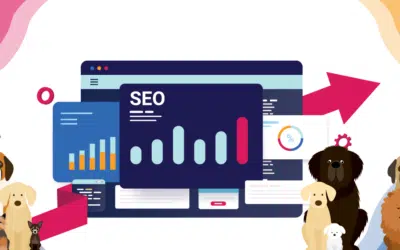Reliable communication in the healthcare industry isn’t just a courtesy—it can be a literal lifesaver. Despite the rapid digital transformation in various sectors, email marketing in the healthcare industry remains a largely untapped potential. Healthcare professionals, from C-level executives to marketing teams, are warming up to the idea of leveraging email marketing not just for promotions, but as a crucial connection point with their audience. In this extensive guide, we’ll explore how healthcare organizations can use email marketing to enhance patient care, improve outreach, and establish a stronger bond with their audience.
Healthcare’s Unique Email Marketing Challenges
The healthcare industry is unlike any other; it operates within rigorous privacy regulations and heightened concerns around data security. This unique setting offers both challenges and opportunities for email marketing. From the mundane to the critical, every communication must be handled with precision and respect for privacy. Understanding these nuances is the first step toward crafting an email marketing strategy that resonates with this specific audience.
Security and Compliance at the Forefront: When healthcare providers send emails, they’re not just communicating; they’re also implicitly promising the utmost confidentiality. Every email campaign must be scrutinized for regulatory fit, ensuring compliance with HIPAA, GDPR, and other data protection standards. This involves understanding the legal jargon and translating it into an actionable email marketing plan that doesn’t compromise patient privacy.
Building Trust through Tangible Results: In healthcare, trust is everything. Email marketing strategies should focus on providing verifiable results, patient success stories, and relevant health information. Unlike retail marketing, the outcomes of healthcare-related email content are measured in improved health, not sales figures, making trust-building the central metric for success.
Personalization with a Healthcare Spin: Healthcare audiences aren’t only segmented by demographics or purchase history but by their medical needs and interests. Effective email marketing in healthcare will have a strong focus on audience personalization, offering content that speaks directly to a patient’s condition or a physician’s specialty.
Delivering Value Through Personalization
One of the most powerful features of email marketing is its capacity for personalization. In healthcare, where every patient interaction is unique, personalizing an email can have a profound impact.
Personalized Subject Lines: Including the patient’s name in the subject line can increase the email open rate. However, the value provided within the email is what will retain their engagement.
Customized Content: Using the patient’s healthcare history to give personalized advice or sending relevant updates regarding their condition demonstrates a level of care and attention that goes a long way in building trust.
Interactive Emails: Adding elements like feedback forms, quizzes, or appointment schedulers within the email can significantly enhance user experience and encourage interaction.
Nurturing Patient Relationships
Email marketing in healthcare has an invaluable role to play in nurturing patient relationships. This is about the long game, building loyalty and trust over time, rather than quick transactions.
Soliciting Feedback: Regular surveys can provide insights into the patient’s experience and their needs, directly shaping your email marketing content.
Celebrate Patient Milestones: Birthdays, anniversaries of treatments, and health milestones are opportunities to reach out and show you care.
Providing Supportive Resources: Sharing pertinent resources or success stories can not only build a supportive community among patients but also foster a positive association with your brand.
Crafting a Winning Email Strategy for Healthcare
With these unique challenges in mind, it’s time to outline an email marketing strategy that aligns with the healthcare industry’s distinct needs. A winning email marketing strategy is built on clear objectives, personalized content, and an empathetic approach that reflects the nature of healthcare.
Defining Clear Objectives: Before pressing send on the first email campaign, it’s vital to define clear, measurable objectives. Are you looking to increase patient engagement, drive traffic to your website, or simply provide educational content? Each goal will dictate the strategy, from the frequency of emails to the metrics used to measure success.
Segmenting Your Email List with Precision: Successful engagement with your constituency is through segmentation, which is foundational in email marketing. In healthcare, this principle rings truer than in any other sector, given the diversity of patient needs and the specificity of medical communications.
Geographical Segmentation: Tailoring messages to specific regions where health concerns might vary is essential. Whether it’s the spread of a seasonal flu vaccine or updates on a localized health service, the relevance of geographic segmentation adds value.
Demographic Segmentation: Age, gender, and socio-economic factors can dictate the effectiveness of your messaging. Segregating your email list based on demographics helps in delivering more personalized communications that cater to individual patient profiles.
Behavioral Segmentation: Understanding patient behavior can assist in crafting emails that encourage regular check-ups, medication compliance, or the adoption of a health-oriented lifestyle. These emails can act as a gentle but persistent nudge towards better health practices.
Measuring Success and Adjusting Strategies Accordingly
To excel in email marketing, it’s crucial to analyze what’s effective and what’s not. This includes monitoring key performance indicators (KPIs) and using the insights to fine-tune your strategy. In the healthcare sector, achieving measurable success looks different. While standard email metrics like open rates and click-through rates offer valuable insights, they only scratch the surface. It’s the indirect measures, such as patient satisfaction survey scores and trends in appointment scheduling post-campaign, that truly unveil the healthcare email marketing ROI.
Open Rates: This metric indicates the number of recipients who opened your email, a good measure of your subject line’s effectiveness and the overall interest in your content.
Click-Through Rates (CTR): CTR tells you what percentage of your audience engaged with the content enough to click on a link. This is a strong indicator of the email’s relevance and the effectiveness of your CTAs.
Conversion Rates: Whether it’s booking an appointment, registering for an event, or signing up for a newsletter, the conversion rate shows you how many of your recipients took the desired action. It’s a crucial measure of your email’s strategic alignment with your goals.
Monitoring Engagement with Precision: Beyond open and click rates, it’s important to monitor how patients are interacting with the content. Are they spending significant time reading a particular newsletter or page, or are they dropping off quickly? Precise engagement tracking can help tailor future content to meet the audience’s preferences.
Analyzing the Effect on Patient Behavior: Changes in patient behavior post-email campaign can be telling. An uptick in appointment scheduling, prescription refills, or engagement with telehealth services could indicate that the email marketing strategy is effectively influencing patient decision-making.
Patient Feedback Loop: Seeking direct feedback on email campaigns can be insightful. Whether through surveys, patient feedback forms, or monitoring social media sentiment, the direct voice of the patient can shape the ongoing email strategy, ensuring it stays relevant, valuable, and well-received.
Design and Optimization for Multiple Platforms
The visual aesthetics of your email play a crucial role in captivating your audience and should be consistent with your brand’s identity. But beyond cosmetics, the functionality across various platforms is a make-or-break element of your email marketing strategy.
Responsive Design: Ensuring your emails are responsive across all devices is paramount. A significant portion of emails is accessed via mobile devices, and a non-responsive design can result in lost opportunities for engagement.
Consistent Branding: Your emails should carry the visual marks that instantly associate with your institution. From your logo to the color scheme, all elements must align with your brand’s image.
Optimization for Accessibility: Healthcare is for everyone, and your email should be accessible to all. This includes making considerations for those with disabilities and ensuring that your content is perceivable, operable, understandable, and robust.
The Art of the Welcome Series
For new patients or subscribers, the onboarding experience is critical. Utilize a welcome series that not only introduces your services and team but also sets expectations for future communications. This initial interaction sets the tone for the relationship and can reduce the likelihood of subscribers marking your email as spam, a critical metric in email deliverability.
Educate, Not Sell: A common pitfall in email marketing is treating every message as a sales pitch. In healthcare, it’s more beneficial to focus on educating your audience. Content that informs, explains, and speaks to your audience’s health concerns or interests can lead to improved brand perception and patient loyalty.
Leveraging Testimonials and Success Stories: There’s no better way to build credibility than by sharing the stories of those who have benefited from your healthcare services. Use patient testimonials and success stories to offer hope, reaffirm trust, and subtly promote your brand’s achievements and expertise.
Calls-to-Action (CTA) that Make a Difference: Balancing the sensitivity of healthcare with the necessity to prompt action can be achieved through carefully crafted CTAs. The right CTA can nudge a patient toward scheduling an appointment, signing up for a service, or reading an important educational piece. Avoid generic marketing language and focus on the impact the action will have on the patient’s health and wellbeing.
Case Studies: Healthcare Email Marketing Done Right
Nothing illustrates the potential of email marketing in healthcare better than real-world success stories. Here, we present two case studies that showcase the variety of applications email marketing can have in the healthcare industry.
Case Study 1: B2B Animal Health Pharmaceutical’s Organization
Amatheon, a premier Animal Health Distributor of Veterinary Specialty Medications™, aimed to enhance their e-commerce email program through an effective email marketing strategy implementation. Achieving impressive clickthrough rates of 25% to 40%, Amatheon successfully boosted engagement levels. Explore further here.
Case Study 2: Lead Conversion Email Campaign
CureMatch, a digital health company focusing on personalized medicine and combination therapy in oncology, launched a direct-to-consumer email campaign offering the “Gift of CureMatch.” This initiative significantly increased brand awareness and lead conversion rates. Discover more information here.
Conway Marketing Group: Your Partner in Healthcare Email Marketing Excellence
In the dynamic and personal realm of healthcare, email marketing goes beyond mere promotion; it serves as a trusted communication channel, fostering trust and demonstrating genuine care. For healthcare marketing leaders, integrating these strategies with a patient-centric focus can set their brand apart. Email marketing is now a vital component in healthcare, capable of humanizing medicine and making recipients feel valued and understood. Effective email campaigns facilitate meaningful communication rather than just marketing in the healthcare industry. Partnering with Conway Marketing Group presents a valuable opportunity. Leveraging our expertise in healthcare challenges, we excel in tailoring email strategies to resonate with specific audiences, focusing on building authentic relationships between healthcare providers and clients. By collaborating with us, healthcare organizations can harness email marketing to not only reach but deeply engage with their audience. Contact Conway Marketing Group today for more information.



